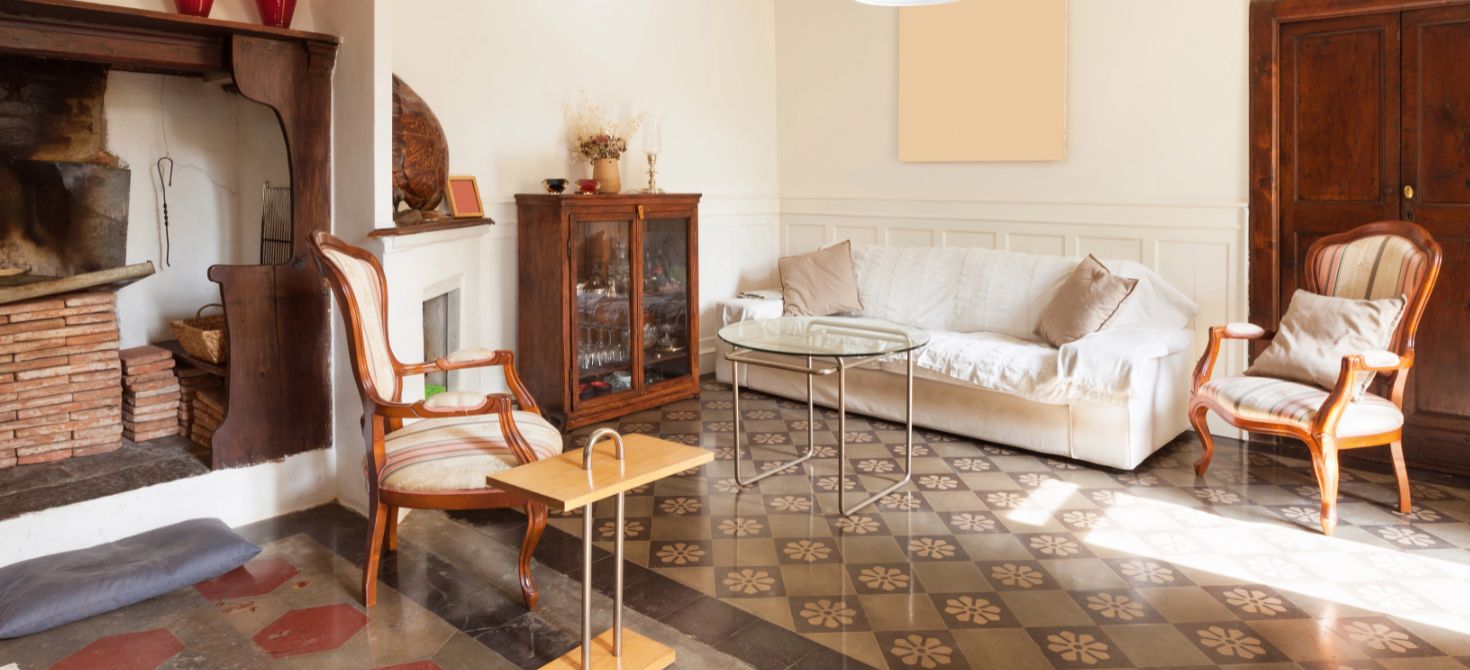- Furnishing trends
- 0 likes
- 177 views

Furnishing a historic home can be a fascinating and rewarding experience, but it also presents several unique challenges that require a careful and creative approach.
Historic houses often boast unique architectural details, such as high ceilings, decorative cornices and original floors, which can be both an advantage and a hindrance in modern furnishing.
However, the art of furnishing historic homes goes beyond simply arranging furniture; it requires a thorough understanding of the style and period of the building itself.
Index
Maintaining the unique characteristics of historic houses
One of the main challenges of furnishing historic houses is preserving their historic character while integrating modern design.
It is important to respect the architectural integrity of the house and work with its unique features rather than against them.
Opt for furnishings that blend harmoniously with the architectural style of the house, choosing pieces that recall past eras without being out of place.
How to manage the limited spaces of historic houses
Historic houses often have limited spaces and uneven floors, which can make furnishing them a real game of strategy.
However, this does not mean that it is impossible to achieve a functional and cosy ambience.
Furnishing historic houses with limited space requires a creative and astute approach, where every corner and every inch must be exploited to the full.
An effective solution is to adopt a minimalist approach, favouring essential furniture with clean lines that do not visually weigh down the space.
Integrating ingenious solutions, such as sofas with integrated storage or folding tables, can be a smart way to maximise space without compromising style.
Furnishing historic homes requires a delicate balance between functionality and aesthetics, and finding the right mix of furniture and accessories is key to creating a cosy and well-organised environment, even in the most limited contexts.
Turning obstacles into opportunities
Furnishing historic homes can be a challenging task, especially when faced with structural limitations that may seem insurmountable obstacles.
While features such as load-bearing walls or exposed beams add charm and character to the space, they can also limit furnishing options.
However, it is precisely in these structural challenges that lies the opportunity to create a unique and atmospheric ambience.
Working with an experienced architect or interior designer is key to successfully addressing these limitations and finding creative solutions that not only harmoniously integrate the structural features of the home, but also turn them into strengths of the overall design.
Depth and authenticity to the space
When furnishing historic homes, it is essential to respect and preserve the historical heritage of the property, a task that requires a combination of historical sensitivity and aesthetic discernment.
Furnishing historic homes means carefully choosing materials and finishes that not only respect the style and era of the home, but also stand the test of time, maintaining their beauty and functionality over the years.
Opting for high-quality furniture and accessories that reflect the style and aesthetics of the era in which the home was built not only helps preserve its history, but also adds depth and authenticity to the space.
From fine fabrics to handcrafted details, every element chosen to furnish a home should be carefully thought out to celebrate and honour its rich historical heritage, creating an environment that tells its story in a vibrant and evocative way.

Technological evolution while respecting tradition
Although the main objective in furnishing a historic home is to preserve its historical character, this does not mean that modern technologies cannot be incorporated in a discreet manner.
For example, hiding electrical wires behind decorative plinths or integrating smart lighting systems can help maintain the traditional look of the home while adding modern elements of comfort and convenience, thus merging past and present into one harmonious living solution.
Furnishing historic houses: combining tradition and innovation
Furnishing a historic home can be an exciting and rewarding experience, but it also presents a unique set of challenges that require a careful and creative approach.
Respecting the architectural integrity of the home, maximising limited space, and incorporating modern technology in a discreet manner are just some of the creative solutions to these challenges. With the help of an experienced architect or interior designer, it is possible to transform a historic house into a unique and cosy space that combines the charm of the past with the comfort of the present.
Visit our website tavolisedie.com for a wide selection of furniture that fits every style and era.
